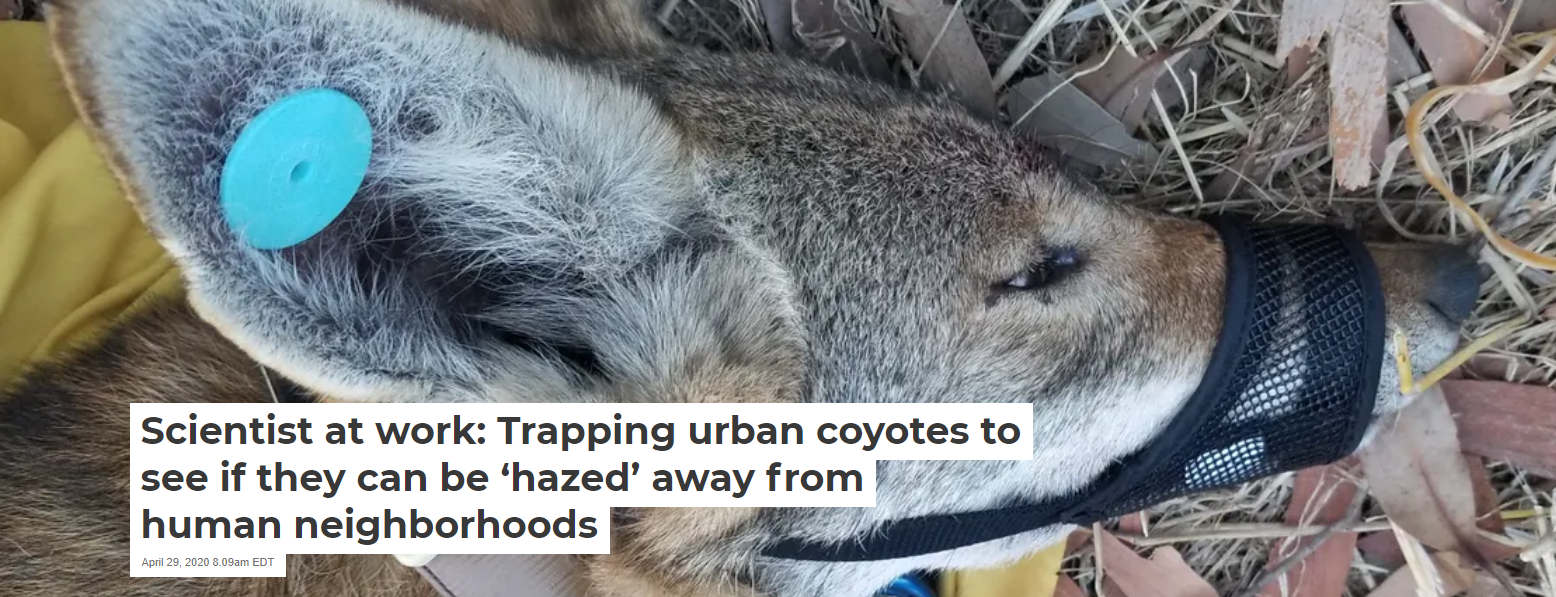Trapping Coyotes in the Urban Landscape

Featured Story
Coyotes are known for how well they adapt to different habitats. They can even be found in and around large cities like San Diego and Los Angeles. They roam plains, forests, mountains and deserts in the U.S. and now coyotes are adapting to living in cities.
This species is primarily nocturnal, meaning they sleep during the day and hunt at night. They are omnivores that primarily eat rabbits, cats, rodents and fruit and other plants but they are not picky eaters. They have been known to attack and often eat domestic animals, especially cats. In a 2019 study, cats were found in 19.8% of coyote scat. Coyotes also occasionally bite humans, especially in Southern California. According to San Diego County Animal Control, there has been an uptick in wild animal reports since the parks were shut down to prevent the spread of Coronavirus and multiple sightings in residential neighborhoods.
UC ANR Cooperative Extension Human-Wildlife Interactions Advisor Niamh Quinn seeks to answer the question if hazing is a reliable means to manage urban coyotes. What is hazing? Hazing is pretty much what it sounds like – shouting, arm waving and noise-making directed at urban coyotes in hopes of getting them to significantly change their behavior and avoid entering urban-residential areas.
In collaboration with LA County's Department of Agriculture, Niamh, and other scientists, have designed an experiment that calls for the capture, GPS collaring and release of 20 coyotes. Initially they will measure how the coyotes use open space and the urban environment. Then, they plan to haze 10 of them and re measure how they use space.
The other 10 will serve as the control group. After 18 months, the unhazed coyotes will switch to a hazing treatment. Skilled trappers will use a device called a Colloraum trap - which is a humane canine capture device. An example of this device is featured on this webpage. It requires an animal to bite down on a lever to engage a cable that traps the animal by the neck. For more information on the capture process read the full article featured here: https://bit.ly/urbancoyotesarticle
So far the team has collected nine out of the 20 coyotes needed for this study. Coronavirus restrictions had suspended their work but they are back in the field again. In the future wildlife scientists like Niamh hope to provide more scientific evidence on whether hazing is an effective management tool. Lastly we'd like to add if you see a coyote in a residential area or around your neighborhood, please do not approach it. You can call the Department of Wildlife Services, in the County of San Diego, to report it at 1-800-486-0010. You can also discourage encounters by keeping your trash receptacles covered and making sure your pets food and water sources are sheltered and not available to wildlife outside your home.

